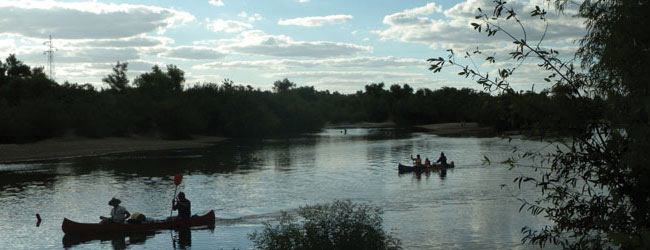Join the UruguayNow mailing list:
UruguayNow in the press
UruguayNow's mix of travel and tourist information on Uruguay, hotel reviews for Montevideo and Punta del Este (coming soon for Colonia), restaurant reviews and tips on excursions, sightseeing and lifestyle in Uruguay has been featured in El Pais, La Republica, MercoPress and on Uruguay's Channel 5 TV and other news media in the country. Internationally, we have had kind mentions in the New York Times and the Daily Telegraph.
Best of the Web
Not yet made it to Uruguay? When you're done with UruguayNow, our choice of the top 6 internet resources for the country is just a mouse click away. In no particular order, they are:
Southern Cone Travel: http://southernconeguidebooks.blogspot.com/
Mercopress: http://en.mercopress.com/
Ola Uruguay: www.olauruguay.com
Retired in Uruguay: http://wallyinuruguay.blogspot.com/
Uruguay Natural: www.uruguaynatural.com
Global Property Guide: http://www.globalpropertyguide.com/Latin-America/Uruguay
For reviews of these sites, please click here.
Other recommended sites

Where it all began
The small, sleepy town of Santa Lucía was – surprisingly – Uruguay's first tourist resort
Interested in seeing a part of Uruguay stuck in a something of a time-warp? Then take a train or bus to Santa Lucía, a town of 16,000 inhabitants in rural Canelones
Santa Lucía can claim to be the place where tourism started in Uruguay (the fin de siècle seaside resort of Piriópolis was founded in 1890 and is a comparative newcomer). In 1872 the first hotel in the country aimed at leisure travellers opened here. The town was also the summer office of choice for Uruguayan president Máximo Santos in the 1880s.
Rather than taking in the pleasures of the seaside, monied Uruguayans in the late nineteenth century preferred to spend time relaxing at their own country retreat in romantic contemplation of nature. The best surviving example is not difficult to find: Walking north-west from Santa Lucía's main square, the town's single-storey houses become sparser and after fifteen minutes or so you arrive at the gates of the Quinta Capurro (Calle Federico Capurro corner Roosevelt), now a park run by the department of Canelones.
The land was bought by Federico Capurro, a businessman, in 1873. The estate covers some nine hectares and, according to Yanina Prezzi, a guide at the park, functioned at the beginning as a sort of combined plant nursery and semi-formal garden.
"Federico Capurro came here and fell in love with the place. At the time he arrived it was just empty land. He gradually introduced many different species of plants from Asia and Africa, but he also used his estate commercially, selling plants in Buenos Aires and fruit and vegetables locally," says Ms Prezzi.
In all, there are over 130 varieties of exotic plants at the Quinta Capurro, according to Ms Prezzi. The owners built a relatively modest home on their estate, now abandoned but awaiting long-promised renovation. Their pergolas, meanwhile, are enormous. Romantic flowers, such as camellias, dominate. A remarkable 400m cane passageway is a little claustrophobic – it stretches the imagination a bit to call it romantic – but it provides welcome respite from the summer sun. A dammar pine looms above shrubs, walkways and smaller trees. "It's over a hundred years old," says Ms Prezzi. "No-one knows exactly how high it is." Elsewhere in the park, mature plane trees rise almost as high.
Curious, too, is the árbol de papel, with its solid yellow-white truck with protrusions that look like emaciated limbs.
Truth to tell, it takes some effort to picture the first inhabitants of Quinta Capurro arriving at their estate by horse and trap. Other country retreats in the neighbourhood were gradually abandoned and divided up, to become smallholdings or suburban homes on the fringes of Santa Lucía. Quinta Capurro may provide guided visits to 18,000 people visits a year – a significant number from Spain, some of them from as far afield as Japan – but outside its gates small-town life is a world away from international tourism: dogs bark, motorcycles and scooters kick up dust, crickets chirp at nightfall.
Meanwhile, close to the Río Santa Lucía, a melancholy mood permeates the Italianate, partly art-deco structure of the Biltmore Hotel. Originally the Hotel Oriental, its name was subsequently changed to the Biltmore, since by the 1920s many of its patrons were families of British railway, electricity and gas workers.
Deserted at the time of our visit, it now apparently functions as a technical school, although you wouldn't know it judging from the original receptionist's desk with (working) bell. We rang it; no-one came to answer. A statue of Carlos Gardel across the road from the Biltmore, sporting a chipped nose, rather caught the mood.
You can ask about renting kayaks to explore the Río Santa Lucía at the snack bar in front of the Biltmore, which also serves as the bus stop for services back to Montevideo. The riverside, meanwhile, is a riot of colour on a summer night, with the setting sun turning the slow-moving river silver and orange, while families grill meat and children splash about in the water.
Factfile:
Practicalites: For trains to Santa Lucía, see Getting around Uruguay. Buses ply the Montevideo – Santa Lucía route from the Tres Cruces terminal, but take care with your return journey because some services terminate at a small bus station close to Montevideo's port. Note, too, that buses run to schedule but the published train timetable is not fully reliable. Changes, cancellations and up-to-date departure information are usually chalked up at the stations in Montevideo and Santa Lucía. There are three hotels in town but little reason to overnight in Santa Lucía; it's a place best visited as a day-trip from the capital. Quinta Capurro: Open every day from 9.30 am to 7 pm in the summer. In winter the park opens an hour later and closes at 5 pm. Free admission (guides expect a tip). Best time to visit: mid-September to mid-October (spring).
